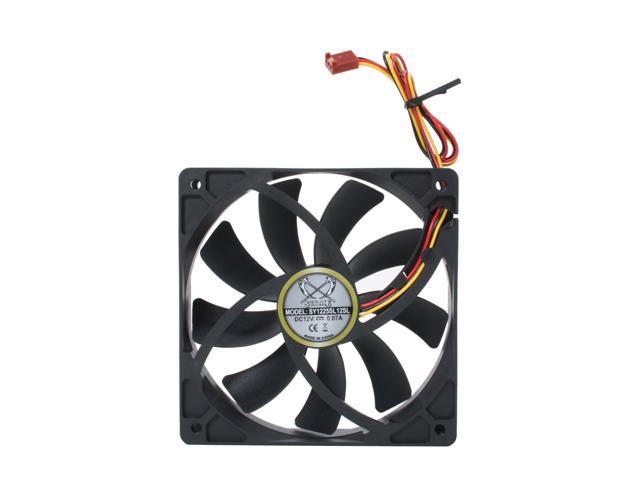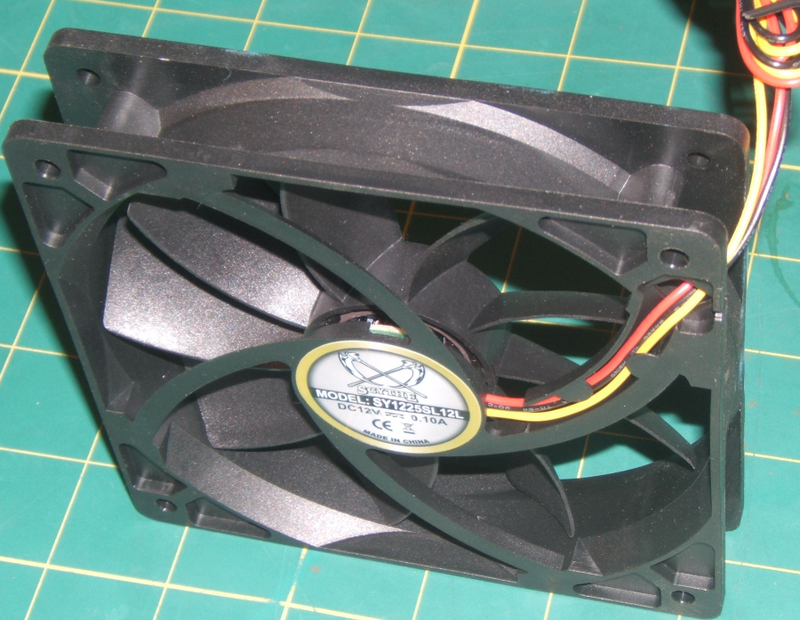I've read with interest postings on the high-pitch Noctua fans, and their problems with back-pressure. Problems that also involved increased noise.
The exhaust fan:
My new case will use a 500RPM Slipstream as the exhaust fan, well-ducted to an original Ninja. Yesterday, I dremeled out the "grill" on the exhaust port. Now I need to provide a low-backpressure air path from the outside to the input of the Ninja/duct, and that one Slipstream fan should "see" satisfactorally low total backpressure.
This would mean I could hear my exhaust fan only if my ear was within 3 inches of the fan, and that's at full load - the fan will be running more slowly at idle (browsing). The 500RPM Slipstream fan is incredibly quiet (even at 563RPM).
The PSU fan:
The PSU will use another 120mm fan, controlled by the mobo, not the PSU. Because of the chassis layout, there is no way to provide a low-backpressure path for this fan. My option is to use a SlipStream fan anyway, or to instead use a GW NCB (at very low voltage) or even a Scythe Kama PWM 120mm modified for use as a 3-wire fan. If you ground the PWM wire on the Scythe fan (while plugged into a 3-pin fan extension; we don't want to short out a mobo), the Scythe runs 175 to 496 RPM at 7.5 to 12V (from an analog fan controller). The fan starts fine from <7.5V to 12V when power is switched on. (Copied from here.)
So, the PSU fan is up in the air, with 3 possible solutions to be chosen on the basis of lowest noise at a given exhaust temperature from the PSU.
Testing for low backpressure
I strongly suspect (99.44%) that the existing CAGs will not be sufficient. Here's how I'll test: first, measure the exhaust temp of the PSU and exhaust fan (two measurements). Then, simply remove the left side panel - that'll provide a low backpressure path! A retest will provide a handle on how serious the problem is.
Next, replace the left side panel with a cardboard replica. Carve holes in the cardboard, patching with duct tape as necessary, to provide the final air-inlet configuration. Then take the dremel to the real left side panel...
How bad a problem is backpressure?
On the SlipStream fans, that is? I just now ran an 800RPM version (so I could hear it, the 500RPM model is downright hard to hear even inches away from my ear) at 12V. Then I moved a 5" square piece of cardboard up close to the fan exhaust, almost blocking it. Result: the very low motor/bearing noise got even lower but the whoosh turbulence increased somewhat. The net result may have been an increase in noise, but nothing major; nothing like what I've read about the Noctua fans. This means the first fan I'll try in the PSU will be a duplicate of the exhaust fan.
I've written this to explain how I approach this kind of new situation. Sometimes my guesses are wrong and sometimes something pops up out of left field, completely unexpectedly. I have all the parts on hand, so only watching football will interfere with this project.
Meanwhile, some of you get to explain what I'm doing wrong, perhaps before I do it!








